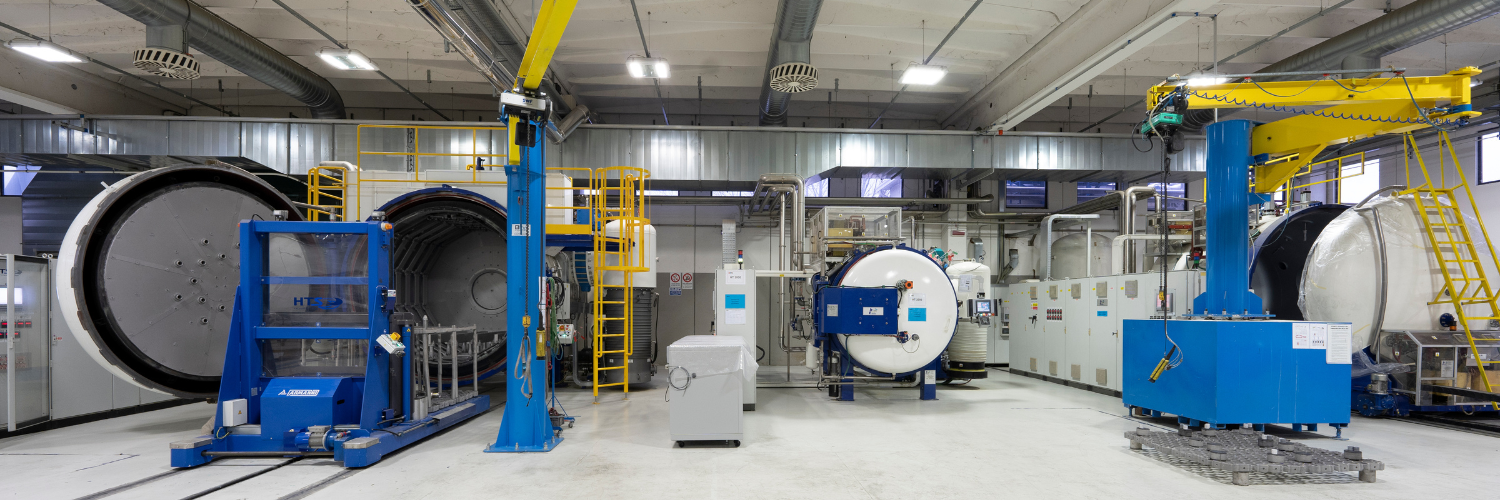
Vacuum Furnace Brazing
Vacuum furnace brazing is a process for joining metallic materials in which a filler material is used having a melting temperature higher than 450 °C, but lower than the melting temperature of the base materials.
The filler metal, applied in the narrow gap between the mating surfaces of the parts (joint), is brought to fusion through a high temperature thermal cycle performed in a high vacuum furnace (operating at pressure < 10-4 mbar).
Once melted, the filler metal flows by capillarity into the joint. The subsequent cooling with an inert pressurized gas causes the solidification of the filler metal and therefore the joining of the two metallic parts.
Advantages
- High soundness of the brazed joint which guarantees tightness at high operating pressures
- Possibility of joining different metal materials and different thicknesses and therefore a high degree of freedom for designers
- Absence of contamination / oxidation of materials because the thermal cycle is performed in high vacuum atmosphere
- Possibility to perform brazing and hardening of materials in a single thermal cycle
- Possibility to braze a large number of parts in a single furnace load
- Possibility to braze different joints of a part in a single furnace load
- High dimensional stability of brazed parts
Applications
Aerospace
- Components of engines
Energy (gas turbines)
- Combustion chambers (Liners)
- Nozzles
- Injectors
- Burners
- Honeycomb seals of stator rings
Materials
- Stainless steels (austenitic and martensitic)
- Precipitation Hardening steels (PH)
- Nickel / Cobalt based superalloys

